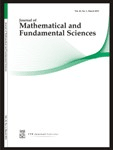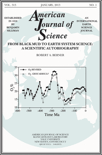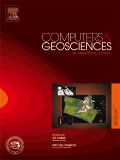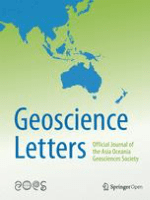
Applied Computing and Geosciences
Scope & Guideline
Unlocking New Frontiers in Applied Geosciences and Computing
Introduction
Aims and Scopes
- Integration of Machine Learning and Geospatial Analysis:
The journal emphasizes the use of machine learning techniques alongside geospatial data to improve predictive modeling and risk assessments in geosciences. This includes applications in flood susceptibility mapping, mineral classification, and geological hazard assessments. - Advanced Imaging and Visualization Techniques:
There is a strong focus on the development and application of advanced imaging techniques, such as micro-CT and remote sensing, to enhance geological understanding. This includes segmentation, resolution enhancement, and the visualization of geological features. - Simulation and Modeling in Geosciences:
The journal publishes research on various simulation and modeling techniques, including computational fluid dynamics, hybrid modeling approaches, and geostatistical applications, aimed at understanding geological processes and predicting geological phenomena. - Interdisciplinary Approaches to Geoscience Problems:
The journal promotes interdisciplinary research that combines geosciences with computer science, data science, and environmental studies, highlighting the importance of collaborative methods in addressing complex geoscientific questions. - Open-source Tools and Software Development:
A unique contribution of the journal is the development and dissemination of open-source software tools for geoscientific applications, facilitating wider access to advanced analytical methods and promoting reproducibility in research.
Trending and Emerging
- Deep Learning Applications in Geosciences:
There is a significant increase in the application of deep learning techniques for various geoscientific tasks, including image segmentation, mineral classification, and predictive modeling for environmental phenomena. - Real-time Data Processing and Analysis:
Emerging themes include the use of real-time data processing for applications such as earthquake early warning systems and flood forecasting, highlighting the importance of timely information in disaster management. - Climate Change and Environmental Sustainability:
Research focusing on climate dynamics, such as monsoon prediction and carbon-cycle modeling, is gaining momentum, reflecting a growing concern for environmental sustainability and the impact of climate change on geosciences. - Integration of Multi-Source Data:
There is a rising trend towards integrating data from multiple sources, such as satellite imagery and ground-based measurements, to enhance geological modeling and understanding of complex systems. - User-Friendly Software Tools for Geoscientific Applications:
The development of user-friendly software tools that facilitate geospatial analysis and data processing is increasingly prominent, as accessibility and ease of use are critical for broader adoption in the geoscience community.
Declining or Waning
- Traditional Geophysical Methods:
There seems to be a waning interest in traditional geophysical methods, such as basic seismic interpretation and conventional geophysical modeling, as newer, more sophisticated techniques like machine learning and deep learning gain traction. - Static Geological Mapping Techniques:
Static approaches to geological mapping, which rely heavily on traditional field methods without integrating advanced computational tools, are becoming less frequent as the focus shifts towards dynamic, data-driven methodologies. - Basic Statistical Analysis in Geosciences:
There is a noticeable decline in publications centered on basic statistical analysis of geological data, likely due to the increasing complexity of data sets and the preference for more robust machine learning techniques. - Single-Disciplinary Studies:
Research that is strictly confined to a single discipline within geosciences is becoming less common, as interdisciplinary studies that combine multiple fields of expertise become more valued and impactful.
Similar Journals

Journal of Mathematical and Fundamental Sciences
Fostering collaboration across diverse scientific disciplines.Journal of Mathematical and Fundamental Sciences, published by INST TEKNOLOGI BANDUNG, serves as an essential platform for disseminating research findings in the diverse fields of mathematical and fundamental sciences. With an ISSN of 2337-5760 and recognized as an Open Access journal since 2013, this publication promotes global accessibility to innovative research, fostering collaboration among researchers, professionals, and students in Indonesia and beyond. The journal has demonstrated its influence within the academic community, evidenced by its classification in various quartiles for 2023, including Q3 in Agricultural and Biological Sciences and Mathematics, and Q4 rankings in several other disciplines. Furthermore, it holds respectable Scopus ranks across numerous categories, reflecting its commitment to quality and relevance in research contributions. With a focus on multidisciplinary studies, the Journal of Mathematical and Fundamental Sciences is dedicated to advancing knowledge and inspiring new ideas across a spectrum of scientific inquiries.

AMERICAN JOURNAL OF SCIENCE
Connecting Scholars Through Groundbreaking DiscoveriesThe American Journal of Science, published by the esteemed Amer Journal Science, stands as a leading platform for groundbreaking research in the field of Earth and Planetary Sciences. With an impressive impact factor and distinguished Scopus rank 34/195 in its category, the journal occupies a prestigious position in the academic community, reflecting its high-quality and influential contributions to scientific knowledge. The journal’s objective is to disseminate original research, comprehensive reviews, and critical discussions that advance our understanding of geological processes and planetary phenomena, supporting scholars and practitioners in their pursuit of knowledge. Despite its traditional publication structure, viewers can explore its rich repository of works dating from 1945 to present, offering a wealth of insights into the dynamic Earth sciences. The journal remains a vital resource for researchers, professionals, and students eager to engage with the latest scientific findings and foster further innovation in the field.

COMPUTATIONAL GEOSCIENCES
Advancing Earth Science through Computational InnovationCOMPUTATIONAL GEOSCIENCES, published by SPRINGER, is a distinguished journal in the fields of Computational Mathematics, Computational Theory and Mathematics, and Computer Science Applications. With a focus on the intersection of computational methodologies and geosciences, this journal serves as a vital platform for researchers, professionals, and students seeking to advance the understanding and application of computational techniques in earth sciences. The journal has consistently maintained a strong standing, evident from its impressive Q2 quartile ranking in 2023 across various categories, and significant Scopus rankings in Computational Mathematics and Earth and Planetary Sciences. The global impact of this journal is underscored not only by its rigorous peer-review process but also by its commitment to disseminating high-quality research that bridges theoretical advances and practical applications within the earth sciences domain. Scientifically rich and culturally diverse, COMPUTATIONAL GEOSCIENCES aims to foster collaboration and innovation while addressing pressing challenges posed by our changing planet, making it an essential resource for the academic community.

GEOTECTONICS
Connecting Theory and Practice in Geology's Frontiers.GEOTECTONICS is a distinguished academic journal published by PLEIADES PUBLISHING INC, focusing on key developments in the field of geology. Established in 1978, the journal has dedicated itself to exploring the intricate processes and phenomena associated with Earth's tectonic systems, making substantial contributions to Earth and Planetary Sciences. With an impressive impact factor reflected in its Q2 ranking within the Scopus category of Geology, GEOTECTONICS stands out as a valuable resource for researchers, professionals, and students alike. The journal offers a platform for rigorous peer-reviewed research that spans both fundamental theories and practical applications in geosciences, affirming its significance in fostering academic discourse and advancing geological knowledge. Although it currently does not offer open access, the journal's accessible format and continued publication through to 2024 ensures that it remains at the forefront of geoscientific inquiry.

Journal of Asian Earth Sciences-X
Advancing Knowledge in Earth and Planetary SciencesJournal of Asian Earth Sciences-X, a distinguished publication by ELSEVIER, is at the forefront of Earth and planetary sciences, particularly focusing on the dynamic fields of geology and earth-surface processes. As an Open Access journal since 2019, it provides unparalleled access to high-quality research, fostering global collaboration and dissemination of knowledge. With an impressive impact factor and ranking in the Q2 category for both Earth-Surface Processes and Geology, it serves as a crucial platform for researchers, professionals, and students alike to share their findings and insights. Situated in the United Kingdom, the journal thrives on contributions that enhance our understanding of Asian geosciences within a broader global context, aiming to tackle major challenges such as climate change and natural resource management. By bridging regional studies with global perspectives, the Journal of Asian Earth Sciences-X is not only a vital resource for academia but also supports sustainable development initiatives across the region.

Vietnam Journal of Earth Sciences
Unveiling Insights, Inspiring Earth Science ResearchThe Vietnam Journal of Earth Sciences, ISSN 0866-7187, is a premier publication from the Publishing House Science and Technology based in Viet Nam, dedicated to fostering advancements in the field of Earth and Planetary Sciences. Operating under a Q2 ranking in the 2023 category of Earth and Planetary Sciences (miscellaneous) and positioned at Rank #62 out of 195 in its general category on Scopus, this journal serves as a critical platform for researchers, professionals, and students seeking to disseminate and engage with high-quality scientific findings. Despite being part of the non-open access model, the journal is committed to providing compelling content, encompassing a range of topics from geological hazards to environmental sustainability, ensuring its relevance and contribution to both local and international scientific communities. With coverage that spans from 2018 to 2024, the journal is poised to continue its role in addressing pressing Earth science issues and fostering collaborations among scholars in an increasingly interconnected world.

Russian Journal of Earth Sciences
Fostering collaboration in the realm of Earth sciences.Russian Journal of Earth Sciences, published by the esteemed Geophysical Center RAS, is a pivotal resource for researchers and professionals in the field of Earth and Planetary Sciences. With an ISSN of 1681-1208 and an E-ISSN of 1681-1208, this journal has demonstrated a significant trajectory since its inception in 1998, currently converging towards its 2024 goal of disseminating innovative research. The journal holds a respectable position within the academic community, ranked Q3 in Earth and Planetary Sciences by Scopus, placing it at the 44th percentile among the most relevant journals in the field. Though it operates under a traditional access model, its commitment to advancing scientific knowledge ensures that vital research findings are available to a global audience. Located in Moscow, Russian Federation, the journal not only serves as a platform for high-quality research but also fosters a collaborative environment for scholars aiming to contribute to the understanding of our planet's geological phenomena.

COMPUTERS & GEOSCIENCES
Pioneering Research in Earth Sciences and Computer ApplicationsCOMPUTERS & GEOSCIENCES, published by PERGAMON-ELSEVIER SCIENCE LTD, is a prestigious academic journal that delivers cutting-edge research at the intersection of computational techniques and geosciences. With an ISSN of 0098-3004 and an E-ISSN of 1873-7803, this journal has been contributing significantly to the field since its inception in 1975 and continues to attract noteworthy articles through 2024. Recognized as a Q1 journal in both the categories of Computers in Earth Sciences and Information Systems, it ranks within the top 12% and 17% of its respective fields according to Scopus. The journal emphasizes innovative applications of computer science in geoscience, providing a platform for researchers to share their findings, methodologies, and advancements. Researchers, professionals, and students dedicated to exploring the computational facets of environmental studies will find this journal to be an invaluable resource.

Applied Earth Science-Transactions of the Institutions of Mining and Metallurgy
Advancing Knowledge for a Sustainable Mining FutureApplied Earth Science - Transactions of the Institutions of Mining and Metallurgy, published by SAGE Publications Inc, is a vital academic journal located in the United Kingdom that seeks to illuminate the intricate relationship between earth sciences and the mining and metallurgy industries. With an ISSN of 2572-6838 and an E-ISSN of 2572-6846, the journal features peer-reviewed research encompassing various subfields such as Geochemistry, Petrology, and Geotechnical Engineering. As an open-access journal, it ensures that cutting-edge findings are readily available, promoting broad access to knowledge crucial for professionals, researchers, and students alike. With its convergence of research years from 2018 to 2024, the journal maintains a Q3 ranking in Earth and Planetary Sciences and Q4 rankings in Geochemistry and Petrology as well as Geotechnical Engineering, which demonstrates its emerging influence in these disciplines. The journal not only provides a platform for innovative research but also addresses practical challenges faced within the field, making it essential reading for those engaged in the applied earth sciences.

Geoscience Letters
Elevating Geoscience Research to New HeightsGeoscience Letters, published by Springer, is a prominent open-access journal in the field of Earth and Planetary Sciences, recognized for its dedication to advancing knowledge and research in this vital area of study. With a reported impact factor that reflects its esteemed position—ranking in the Q1 quartile of Earth and Planetary Sciences, particularly as the journal ranks #48 out of 195 in the general category according to Scopus—the journal serves as a vital resource for researchers, professionals, and students. Since its inception in 2014, Geoscience Letters has facilitated the dissemination of high-quality research and critical insights, aiming to bridge the gap between scientific discovery and societal needs. Its commitment to open access ensures that the latest findings are readily available to a global audience, thus enhancing collaboration and innovation within the geosciences community.